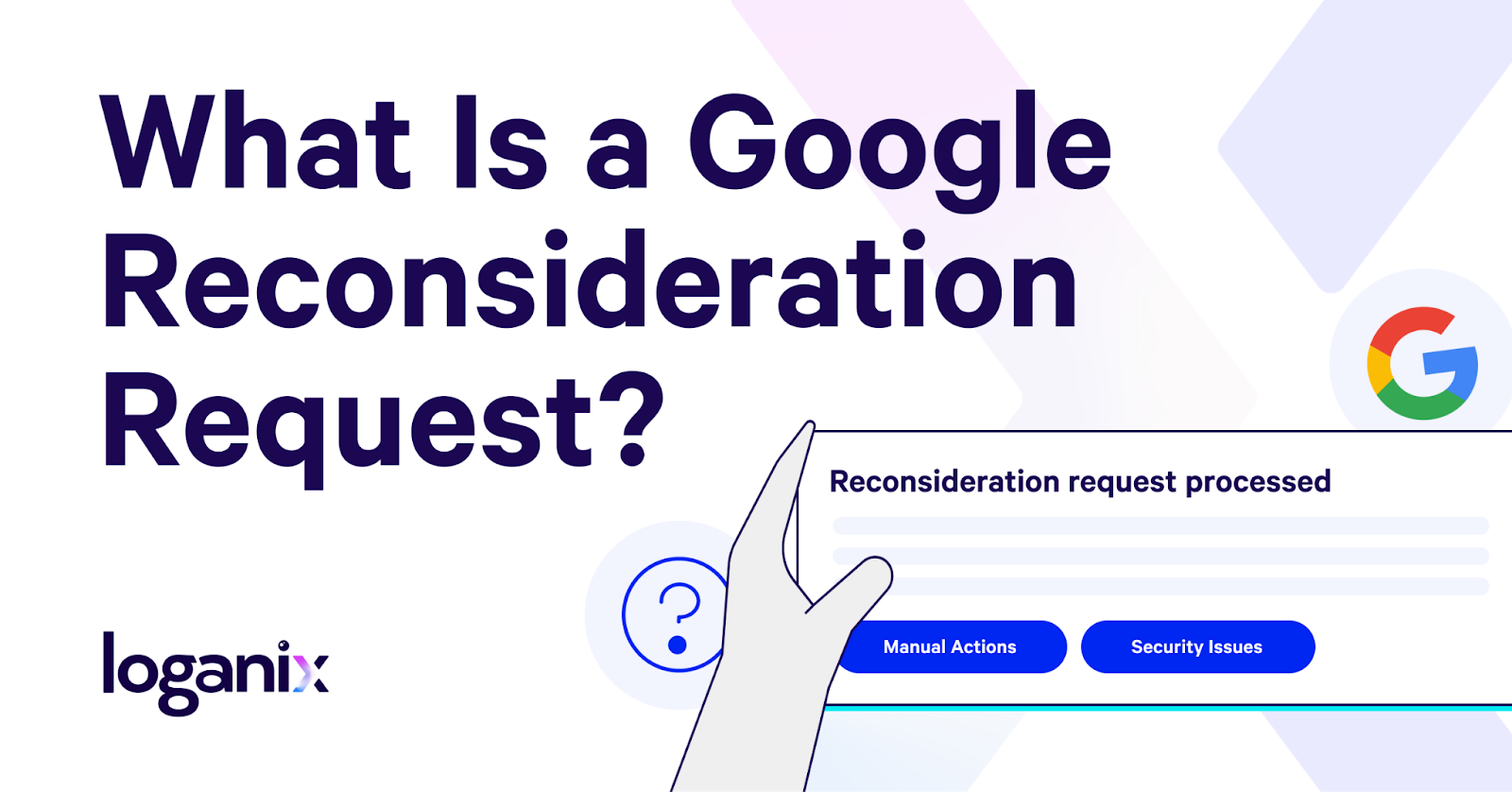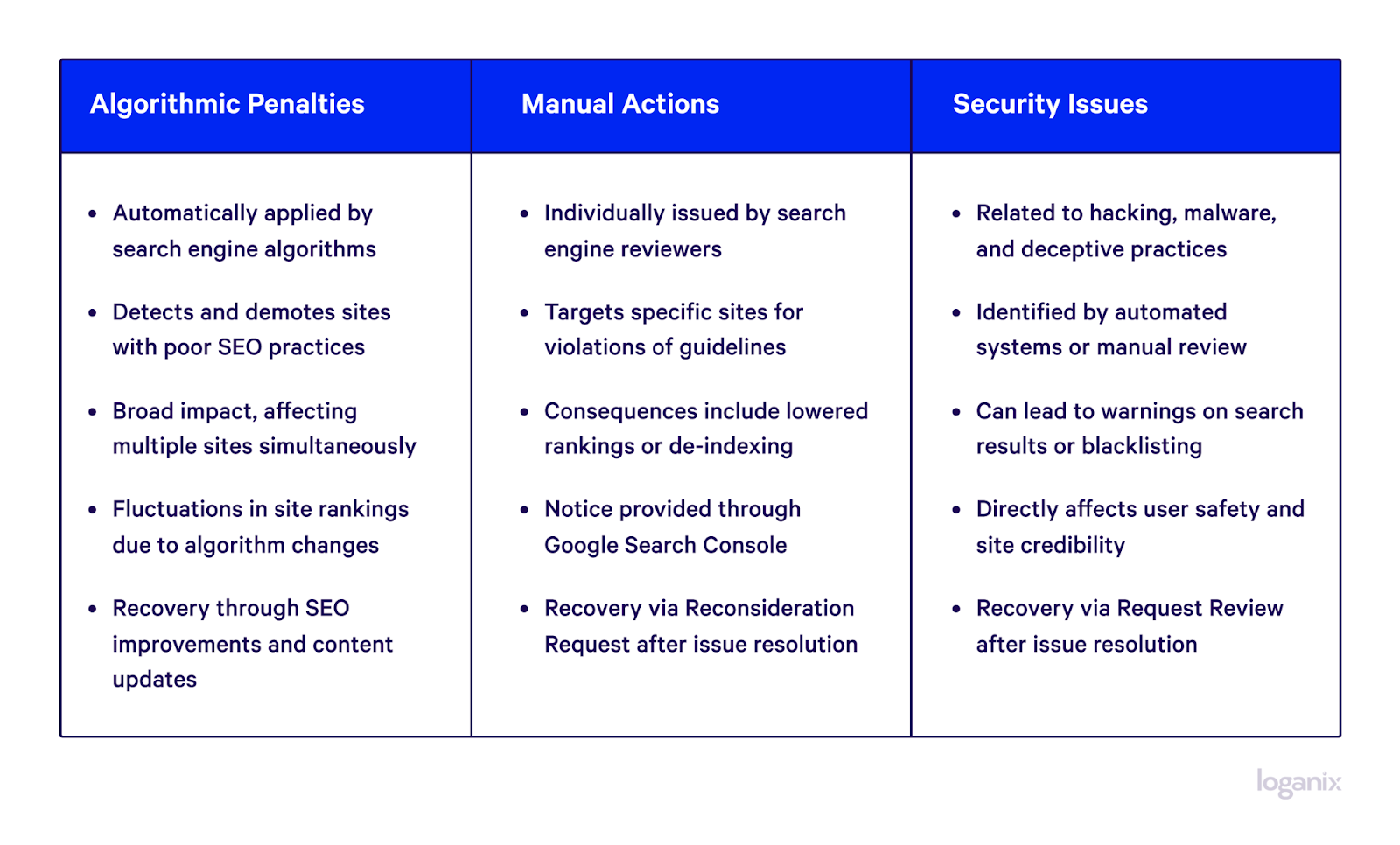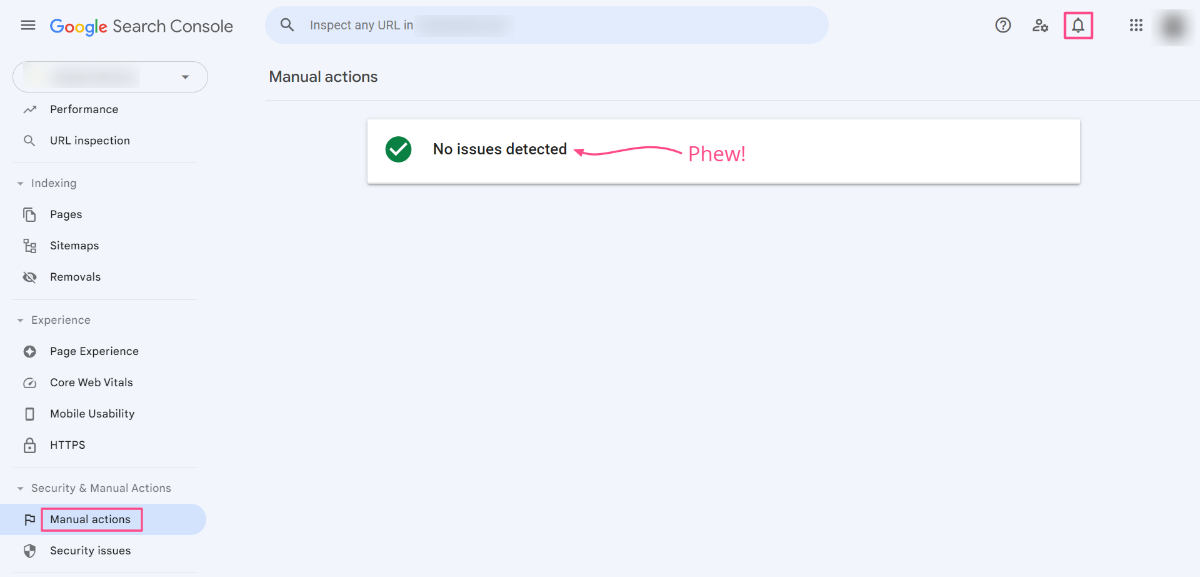What Is a Google Reconsideration Request? +Manual Actions

Hand off the toughest tasks in SEO, PPC, and content without compromising quality
Explore ServicesHave you come up against a manual action on your website? Enter the Google Reconsideration Request—a possible lifeline for websites that have fallen out of Google’s good graces.
To help you get things back on track, by the end of this read, you’ll
- have the answer to the question, “What is a Google reconsideration request,”
- understand why Google reconsideration requests can help you clear your website’s name of any wrongdoing,
- and know the steps to take to rectify penalties, manual actions, and security issues.
What Is a Google Reconsideration Request?
A Google Reconsideration Request is a formal request you submit via Google Search Console, asking Google to review your site after you’ve fixed issues that led to a manual action. A reconsideration request is your chance to say, “Hey, Google, things have changed around here. Check in and see for yourself.”
Learn more: Interested in broadening your SEO knowledge even further? Check out our SEO glossary, where we’ve explained over 250+ terms.
Algorithmic Penalties vs. Manual Actions vs. Security Issue

Before we move on, let’s explore the differences between algorithmic penalties, manual actions, and security issues and how each potentially affects your site’s performance on Google’s search engine results pages (SERPs).
Manual Action
Manual Actions are specific measures Google’s human reviewers take against a site when found to be non-compliant with Google’s spam policies. These actions are primarily aimed at addressing attempts to manipulate Google’s search index. The consequences of a manual action can be significant, often resulting in the affected pages or the entire site being ranked lower or completely omitted from Google search results without any visual indication to the user—an action known as de-indexing.
Google notifies website owners of any manual actions in the Manual Actions report and the Google Search Console message center. The reasons for manual actions can vary, but they generally involve practices that are considered spammy or manipulative, such as unnatural links, keyword stuffing, hidden text, or cloaking.
You can see a full list of manual actions here on Google’s Manual Action Report page.
Algorithmic Penalty
Algorithmic penalties are the result of automated assessments by Google’s search algorithms, which consider over 200 ranking factors. These algorithms crawl your site, identifying any violations of Google’s Search Essentials (formerly Google Webmaster Guidelines) or signals of poor quality, such as poor user experience, slow site speed, unhelpful content, or misalignment with user search intent.
Unlike manual actions, these penalties are not explicitly communicated, making them challenging to identify. Often, the first sign of an algorithmic penalty is a sudden drop in search rankings, a decline in organic keywords, or a decrease in organic traffic. Identifying these penalties typically involves monitoring your site’s performance through tools like Google Analytics.
Security Issue
Security issues on a website can significantly impact its performance and reputation. According to Google’s Security Risk Report page, these issues fall into several categories, each posing a unique threat to website integrity and user safety:
- Hacked content refers to unauthorized content placed on your site due to security vulnerabilities. To protect users, Google actively keeps such hacked content out of search results.
- Malware and unwanted software are programs designed to harm a device or its users, engage in deceptive practices, or negatively affect the user experience. Malware can be installed either by a hacker or inadvertently by the site owner.
- Social engineering involves content that deceives visitors into undertaking dangerous actions, like revealing confidential information or downloading harmful software.
When a website is affected by these security issues, it can be flagged in search results with a warning label or an interstitial warning page in browsers, deterring users from visiting the site.
Why Is a Google Reconsideration Request Important?
You should now have a firm grasp on what a Google reconsideration request is, but which of the three scenarios we listed above—algorithmic penalty, manual action, security issue—can be rectified by a reconsideration request?
Let’s find out.
The Only Way to Lift a Manual Action
A Google Reconsideration Request is the only pathway to having a manual action lifted from your site. When Google’s human reviewers impose a manual action, it means your site has been flagged for practices that violate Google’s spam policies.
While Google views the reasons behind an algorithmic penalty to be fairly benign, the reasons for a manual action they take far more seriously. If you’ve received a manual action, it’s often because a Google reviewer has determined that your actions are intentionally manipulative, black hat, and are egregious enough to warrant more serious consequences, such as a significant drop in rankings or even complete removal from search results.
The reconsideration request is your opportunity to demonstrate to Google that you’ve rectified the issues and that your site now adheres to their guidelines.
What About Algorithmic Penalties and Security Issues?
Algorithmic penalties are common after a Google algorithm update. Recovery typically takes SEO improvements and content updates to rectify. Security issues, however, require the issue to be resolved and then submission of a request review through the “Security Issues” tab found in Google Search Console.
When Is a Google Reconsideration Request Necessary?
If your site is affected by a manual action, you will be notified in the Manual Actions report and the Google Search Console message center—the bell is found in the top right-hand corner. You can also visit the “Security and Manual Actions” tab to double-check that you don’t have any pending manual actions that need to be addressed.

Google Reconsideration Request FAQ
Q1: How Do I Write a Reconsideration Request?
Answer: To write a compelling reconsideration request, be honest and detailed about the corrective actions taken, such as removing problematic links or content, and demonstrate steps to prevent future issues, being as polite and respectful in your message as possible. Submit your request only after thoroughly addressing all issues and providing comprehensive documentation of your efforts.
Q2: How Do I Submit a Reconsideration Request to Google?
Answer: The Manual Actions report in Google Search Console provides detailed information about the type of manual action taken, the affected pages, and steps to fix the issue. Once you’ve fixed the problems, you can submit a reconsideration request through the same report.
Q3: Can I Submit a Reconsideration Request If My First Attempt Is Denied?
Answer: Yes, you can submit another reconsideration request if your first attempt is denied, but it’s crucial to address all the issues highlighted by Google in their response before resubmitting. Take the time to thoroughly review and correct your site according to Google’s feedback to increase the chances of your subsequent request being approved.
Conclusion and Next Steps
Navigating the complexities of SEO, from adhering to Google’s guidelines to recovering from penalties, requires diligence and expertise.
But what if you could simplify this journey and maximize your website’s performance with professional assistance?
At Loganix, we understand the intricacies of SEO and the importance of staying in Google’s good graces. Our services range from comprehensive SEO audits that identify potential issues before they become problematic to crafting bespoke content strategies that align with your unique business goals.
🚀 We invite you to explore our SEO services and discover how we will help turn your SEO challenges into opportunities for growth and success. 🚀
Hand off the toughest tasks in SEO, PPC, and content without compromising quality
Explore ServicesWritten by Aaron Haynes on December 4, 2023
CEO and partner at Loganix, I believe in taking what you do best and sharing it with the world in the most transparent and powerful way possible. If I am not running the business, I am neck deep in client SEO.





